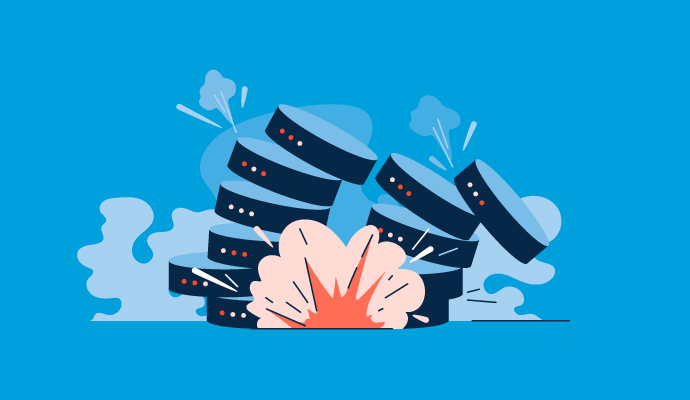The Significance of Effective Data Devastation Practices in Safeguarding Sensitive Details and Ensuring Computer Security
In a period where information breaches are increasingly usual, the value of reliable information damage practices can not be overemphasized. Organizations face substantial risks when delicate info is improperly dealt with, possibly resulting in unauthorized accessibility and extreme monetary effects. Carrying out durable information destruction approaches not only mitigates these risks but additionally aligns with legal compliance requirements, guaranteeing that companies support their credibility and foster customer trust fund. However, the inquiry remains: what specific approaches can be employed to enhance these practices, and exactly how can organizations properly incorporate them right into their overall cybersecurity framework?
Understanding Data Damage
Recognizing information damage is vital in today's electronic landscape, where delicate information can conveniently be jeopardized. Reliable data damage includes not merely making certain however removing data that data is irretrievable via detailed approaches. This process is necessary for organizations that take care of confidential customer info, intellectual home, or interior records, as any kind of breach can lead to severe economic and reputational effects.
Data destruction includes various methods, including shredding physical media, degaussing magnetic storage devices, and utilizing software-based remedies that overwrite data multiple times. Each method serves a specific purpose and must line up with the level of sensitivity of the details being taken care of. As an example, physical destruction is often chosen for disk drives having very personal information, while software application techniques may be enough for less sensitive information.
Furthermore, sticking to sector criteria and guidelines, such as the General Information Security Regulation (GDPR) or the Medical Insurance Transportability and Liability Act (HIPAA), is critical for compliance and to reduce legal dangers. Organizations should establish a durable information damage plan, train staff members on ideal techniques, and regularly investigate their procedures to ensure that all delicate info is thrown away firmly and successfully.
Threats of Inadequate Practices
Inadequate information devastation techniques subject companies to considerable threats that can have far-ranging effects. When sensitive info is not correctly gotten rid of, it stays at risk to unauthorized accessibility, which can lead to information violations and identity burglary. Such cases not just jeopardize the protection of individuals yet likewise tarnish the organization's credibility, causing a loss of customer trust fund and possible monetary effects.
Furthermore, governing compliance is progressively strict in many markets. Failure to adhere to information destruction regulations can lead to hefty penalties and legal actions versus organizations. These penalties can stress monetary sources and draw away interest from core service procedures.
In enhancement, the abuse of recurring data can cause intellectual property burglary or business espionage, jeopardizing competitive benefits (data destruction). The impact of poor information destruction prolongs past immediate monetary losses; it can additionally lead to lasting damages to brand integrity and market setting

Organizations have to acknowledge that information safety and security is not solely concerning preventing breaches; it also encompasses the responsible management of data throughout its lifecycle. Neglecting reliable data devastation methods can have tragic effects, underscoring the requirement for robust steps to reduce these threats.
Best Practices for Information Damage
Implementing efficient data devastation practices is important for safeguarding sensitive details and preserving conformity with regulative requirements. Organizations ought to take on a multi-faceted approach to ensure that data is irretrievable, thus stopping unapproved gain access to and potential breaches.
First, information ought to be classified based on sensitivity, enabling organizations to use suitable destruction techniques tailored to the degree of risk. For electronic information, using software-based data-wiping devices that adhere to industry standards can effectively overwrite existing information. Physical destruction techniques, such as shredding or degaussing, are important for tools that save sensitive information, guaranteeing full removal.
Developing a clear data retention plan is vital, detailing the length of time various types of info should be retained prior to destruction. Normal audits of data storage systems are also necessary to determine unneeded or out-of-date data requiring elimination.
In addition, training employees on the importance of data devastation and the details protocols to adhere to fosters a society of safety within the organization. Ultimately, maintaining documentation of information damage refines gives liability and supports conformity with outside laws and internal policies. By adhering to these best practices, organizations can considerably reduce the risks related to check my site information exposure.
Legal and Compliance Considerations

Failing to adhere to these laws can lead to extreme penalties, including substantial penalties and reputational damage. Organizations needs to implement a robust data destruction policy that aligns with these lawful structures and gives clear guidelines on the proper methods of information disposal, whether physical shredding or digital wiping.
In addition, maintaining documentation of data damage tasks is vital for showing conformity during audits or examinations. By prioritizing legal and compliance considerations, organizations can improve their data safety pose and foster trust check over here fund with stakeholders and customers, ultimately adding to a more safe and secure data management setting.
Benefits of Effective Information Devastation
Efficient information destruction methods extend beyond mere conformity; they use substantial benefits to companies that prioritize them. By ensuring that sensitive details is irretrievably destroyed, companies reduce the threat of information breaches and the possible economic repercussions associated with them. This proactive technique not only safeguards against unapproved accessibility however likewise enhances the general reliability of the organization in the eyes of customers and stakeholders.
Executing robust information destruction methods, such as physical devastation of storage space tools or sophisticated information cleaning strategies, adds to the strengthening of an organization's cybersecurity posture. data destruction. It minimizes the possibility of copyright burglary and secures proprietary information, consequently maintaining an one-upmanship on the market

Conclusion
In verdict, effective data devastation practices are necessary for guarding delicate info and improving overall computer security. Eventually, a commitment to robust data damage strategies cultivates a culture of duty, thereby enhancing an organization's cybersecurity pose and preserving customer depend on.

Comments on “The Influence of Effective Data Destruction on Cyber Security Risk Administration”